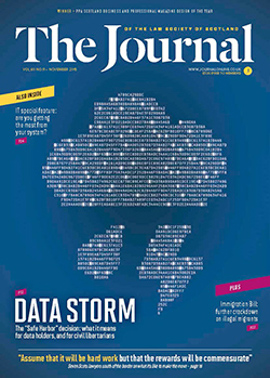Taxing question of relief
Tax relief on pension contributions has historically been received at an individual’s marginal tax rate, subject to certain restrictions. Under the guise of the pensions tax simplification regime, the main limits introduced in April 2006 were the lifetime allowance (LTA) and the annual allowance (AA). Within three years of that regime coming into being, the then Labour Government indicated that those on the highest incomes benefited disproportionately from tax relief on pension contributions, which would be exacerbated by the additional tax rate from April 2010 for those with incomes over £150,000. Having proposed complex restrictions on tax relief from April 2011, Labour lost office at the general election before it could implement its proposals.
Continuing squeeze
In his first Budget speech (June 2010), George Osborne announced that he would work with the pensions industry on alternative proposals.
The option chosen was to reduce the AA from £255,000 to £50,000 from 6 April 2011, and the standard LTA from £1.8 to £1.5 million from 6 April 2012. Having managed to get away with that, from 6 April
Most recently, in the summer Budget of 8 July, the Chancellor announced the introduction of a taper to the AA for those with adjusted annual incomes, including their own and employer’s pension contributions, over £150,000. Broadly speaking, for every £2 of adjusted income over £150,000, an individual’s AA will be reduced by £1, down to a minimum of £10,000 for those earning £210,000. In advance of the introduction of this tapered AA, transitional rules were introduced with effect from 8 July 2015 to align pension input periods for AA purposes, so that from 6 April 2016 all existing arrangements will have a
Individuals will have an AA of £80,000, plus any available carry forward, for all their pension savings in all pension input periods ending on or after 6 April 2015 and on or before 8 July 2015. Savings from 9 July to 5 April 2016 will have a nil allowance, but up to £40,000 of any unused AA from the period up to 8 July 2015 is added to this, plus any remaining carry forward relief from the tax years 2012-13, 2013-14 and 2014-15. Clearly, for some those arrangements for the tax year ending 5 April 2016 may operate favourably in giving additional relief.
New thinking?
Alongside the summer Budget announcement, the Government has taken forward consultation on yet further pensions tax relief options. Its paper Strengthening the Incentive to Save: a Consultation on Pensions Tax Relief was issued in July and requested responses by 30 September 2015. The Government outlined in its paper certain principles that it considered any reform should meet as follows:
- It should be simple and transparent. The Government believes that greater simplicity and transparency may encourage greater engagement with pension saving and strengthen the incentive for individuals to save into a pension.
- It should allow individuals to take personal responsibility for ensuring they have adequate savings for retirement. It should encourage people to save enough during their working lives to meet their aspirations for a sufficient standard of living in retirement.
- It should build on the early success of automatic enrolment in encouraging new people to save more.
- It should be sustainable. Any proposal for reform should also be in line with the Government’s long-term fiscal strategy.
The last decade of Government-driven change, examples of which are highlighted above, seems to fly in the face of the first two of the Government’s espoused principles. Time will tell whether automatic enrolment will be considered to be an enduring success, with much of the regime in terms of the level of required saving still to be implemented.
Whilst the Government stresses that it is approaching the consultation with an open mind, with an estimated net annual cost to the Exchequer from pension tax relief of £21.2 billion (2013-14) and an established direction of travel, the concern must be that it will not be able to resist even further restrictions on the “favourable” tax treatment for pensions. Key issues explored in the consultation were whether the Government should change the tax relief system from upfront relief to an ISA-style relief on withdrawal, or change the rate of tax relief from a tiered to flat rate system. The Chancellor has confirmed that the Government will not respond to the consultation until next year’s Budget. The concern is that further change may only serve further to undermine confidence in pensions as a long-term savings vehicle.
In this issue
- Appropriate adults and defence agents: who does what?
- Buying from a housing association: why consent matters
- Harassment: a civil claim?
- A welcome abroad: EYBA in London
- Reading for pleasure
- Opinion: David Faith
- Book reviews
- Profile
- President's column
- ScotLIS gets the green light
- People on the move
- Storm over Safe Harbor
- Light on a murky world
- Southern horizons
- Mediation minefield
- Migrants: no way to turn?
- The technological edge
- As our suppliers see us
- More rules to grapple with
- Fraud and divorce – a Scottish Sharland?
- What future for employment tribunal fees?
- Heading for a showdown on hard won human rights?
- Taxing question of relief
- Scottish Solicitors Discipline Tribunal
- How far can we rely on the register?
- All part of the game
- Law reform roundup
- From the Brussels office
- Poverty: a new front in the war
- Damage limitation: working it out
- Ask Ash
- A lawyer's lament
- Appreciation: Michael Scanlan






